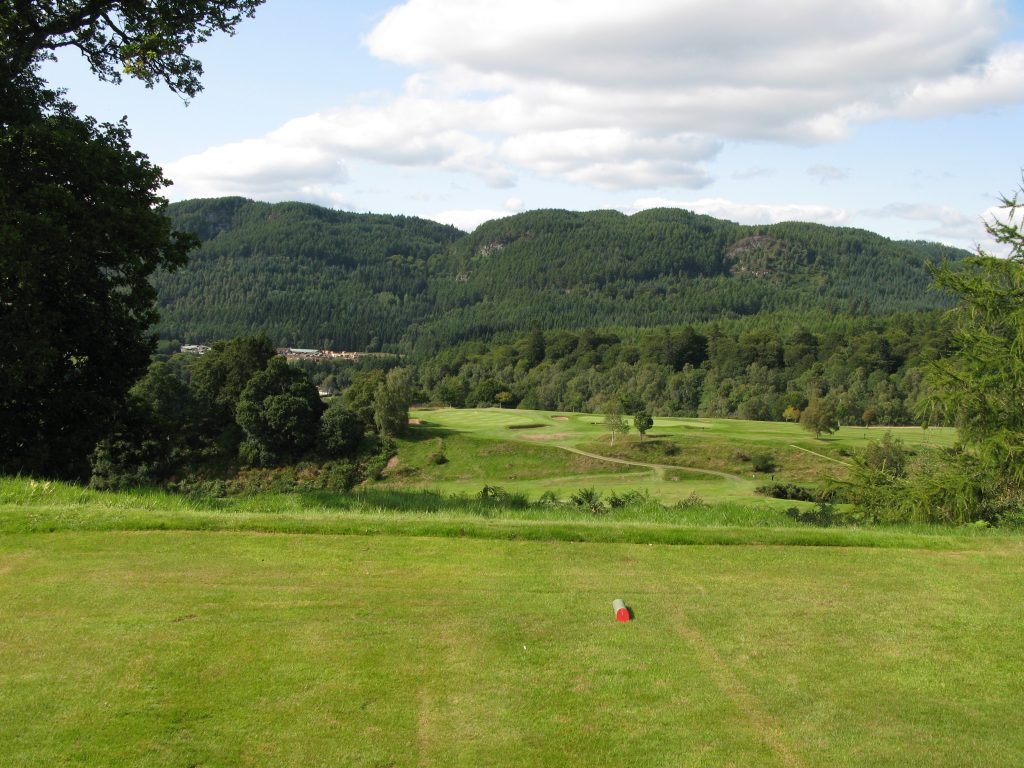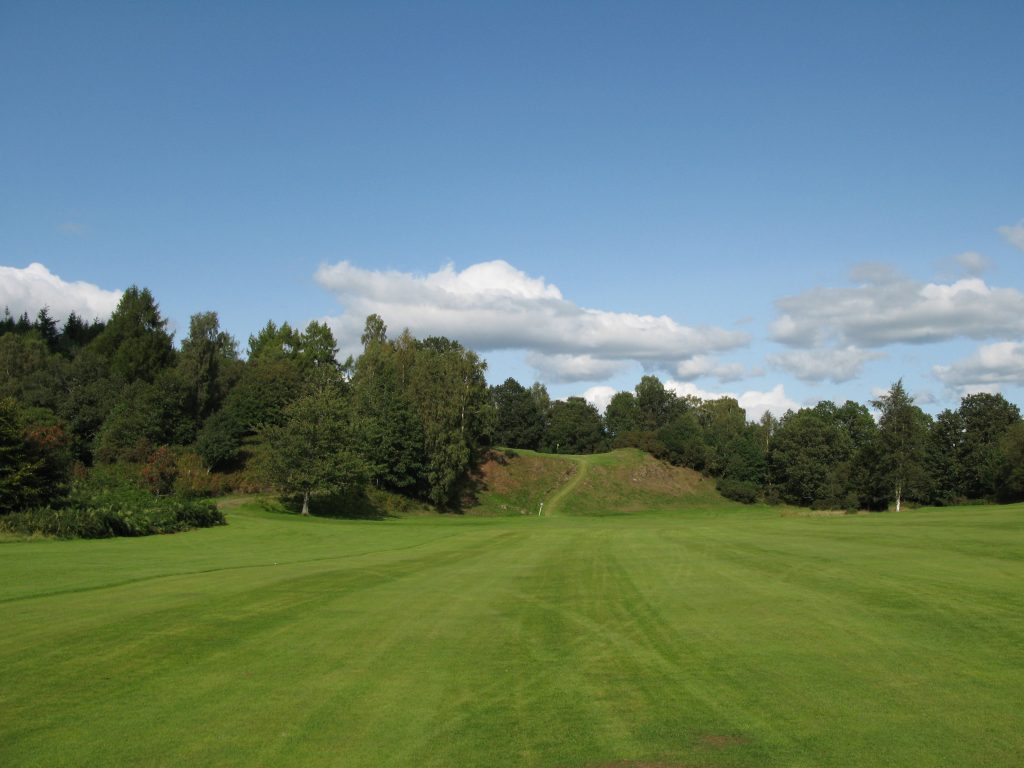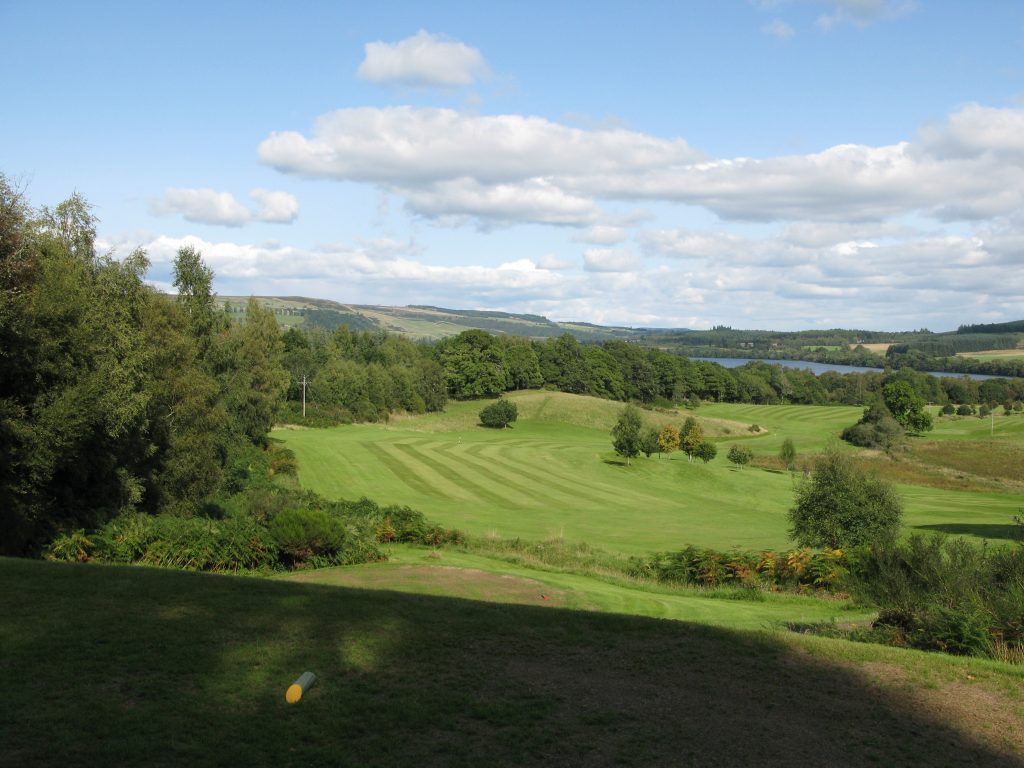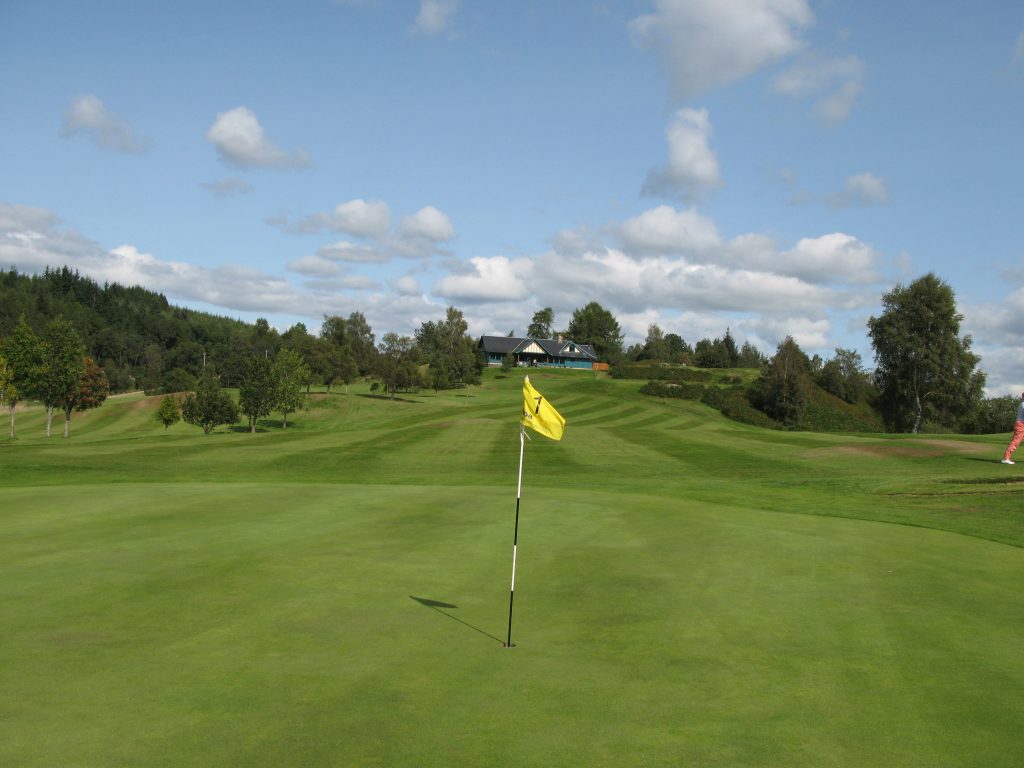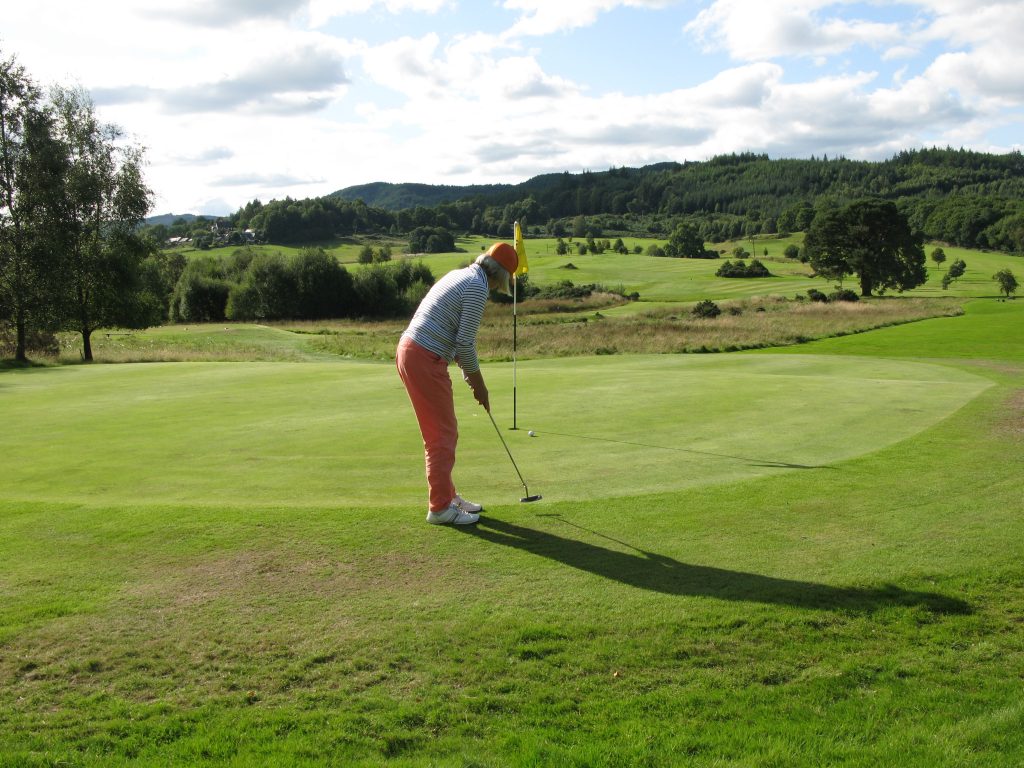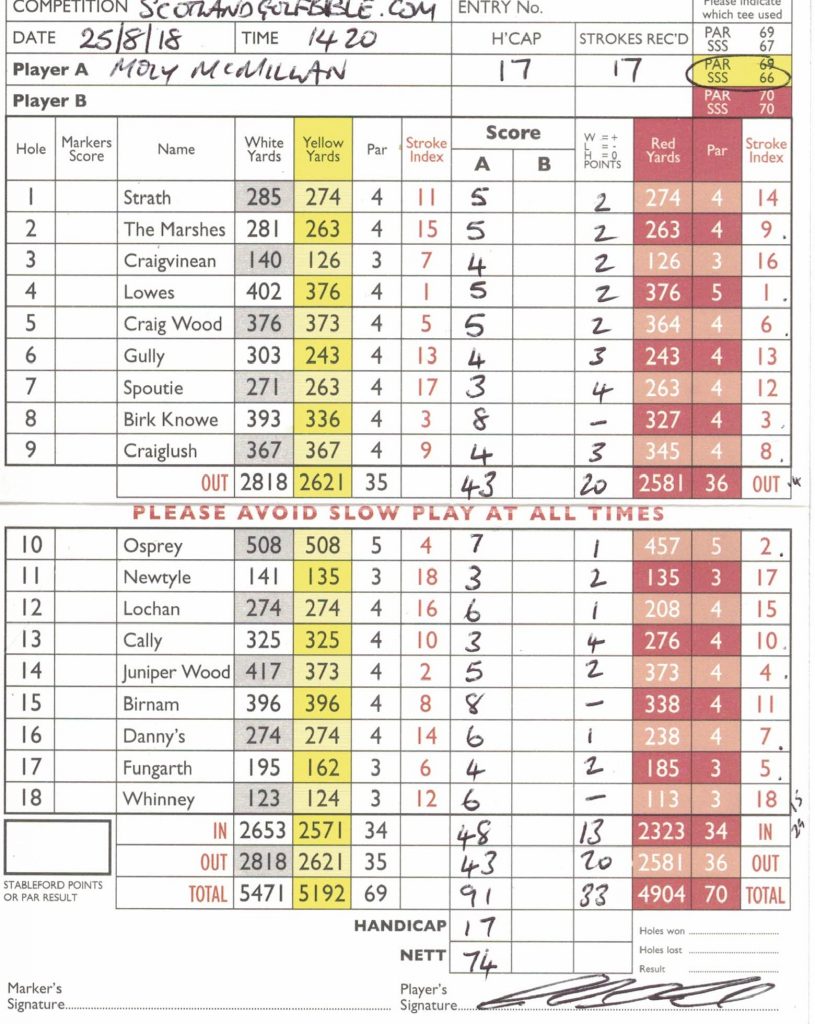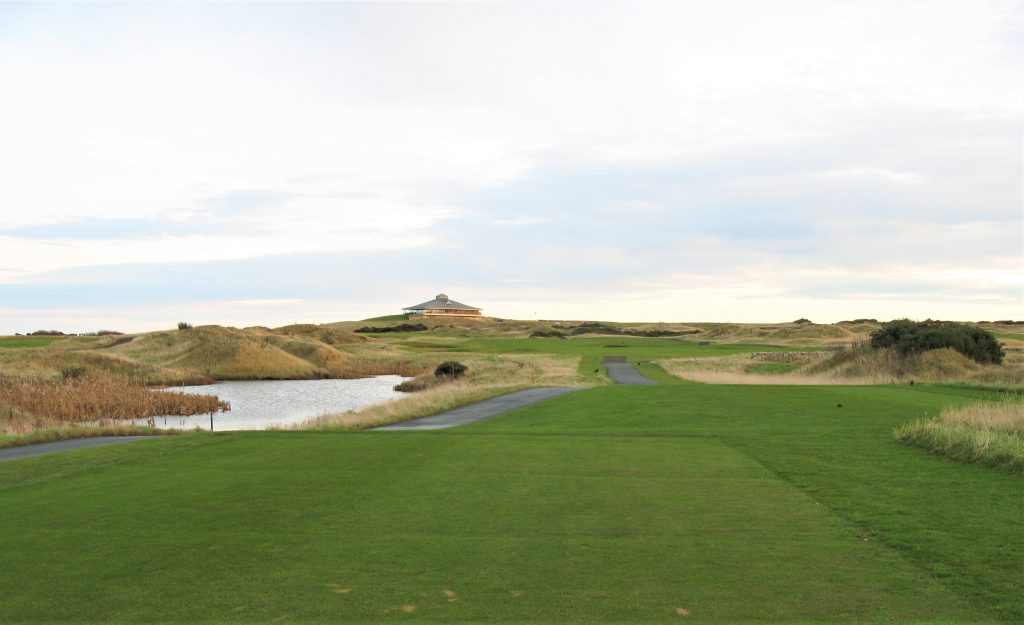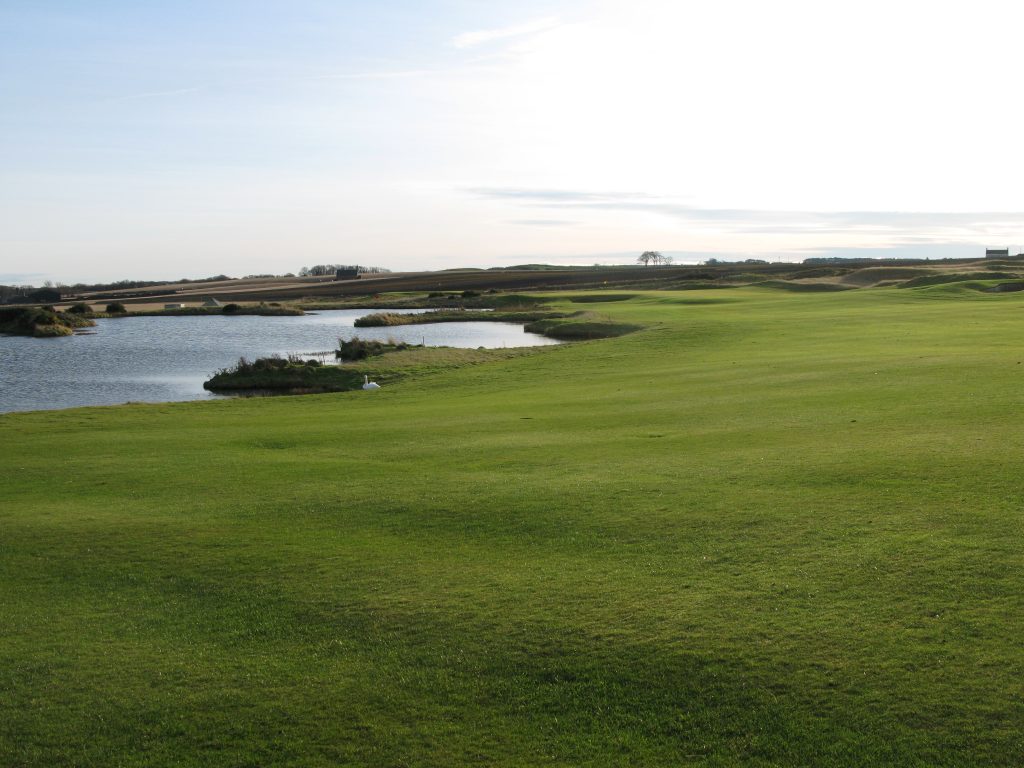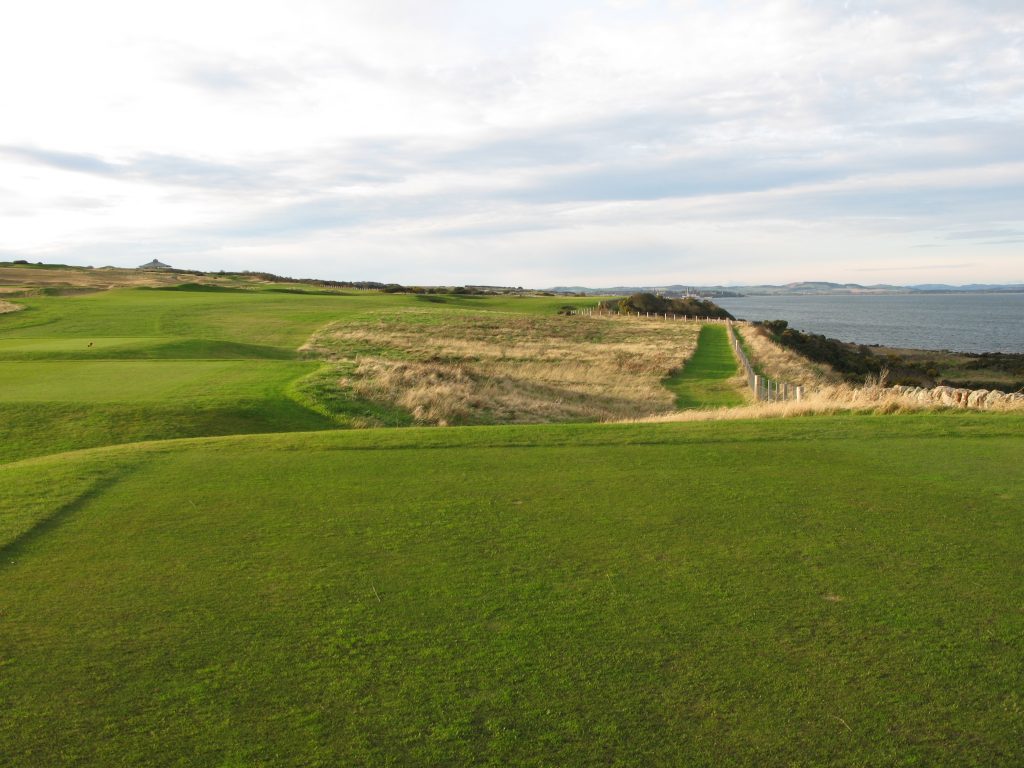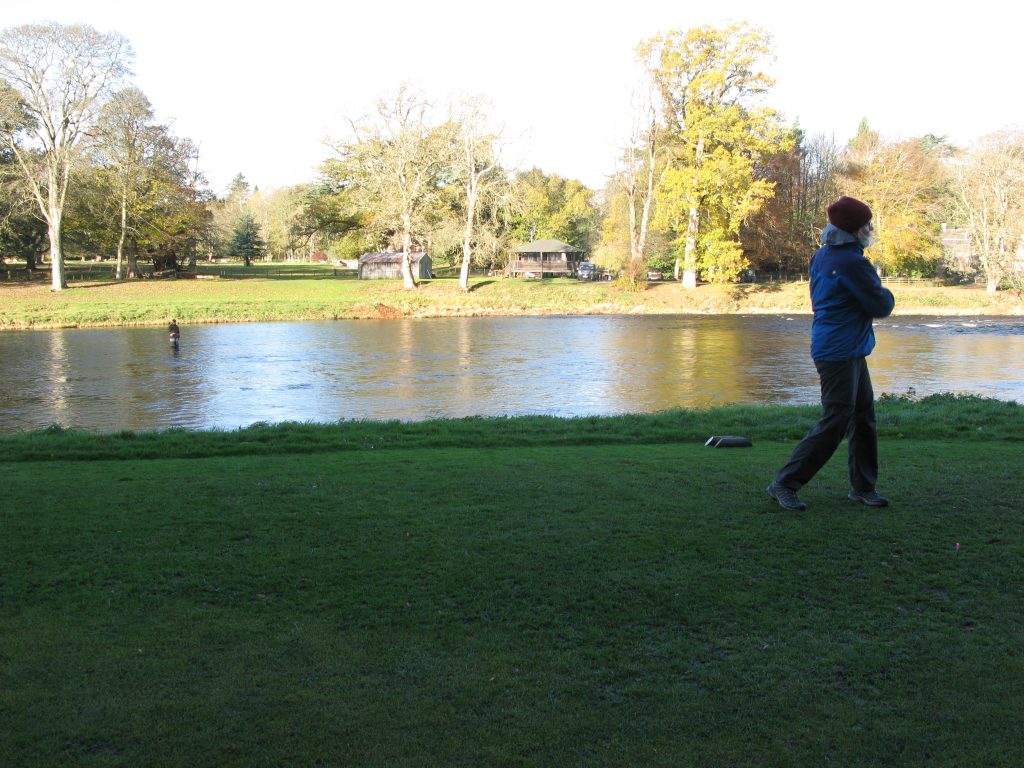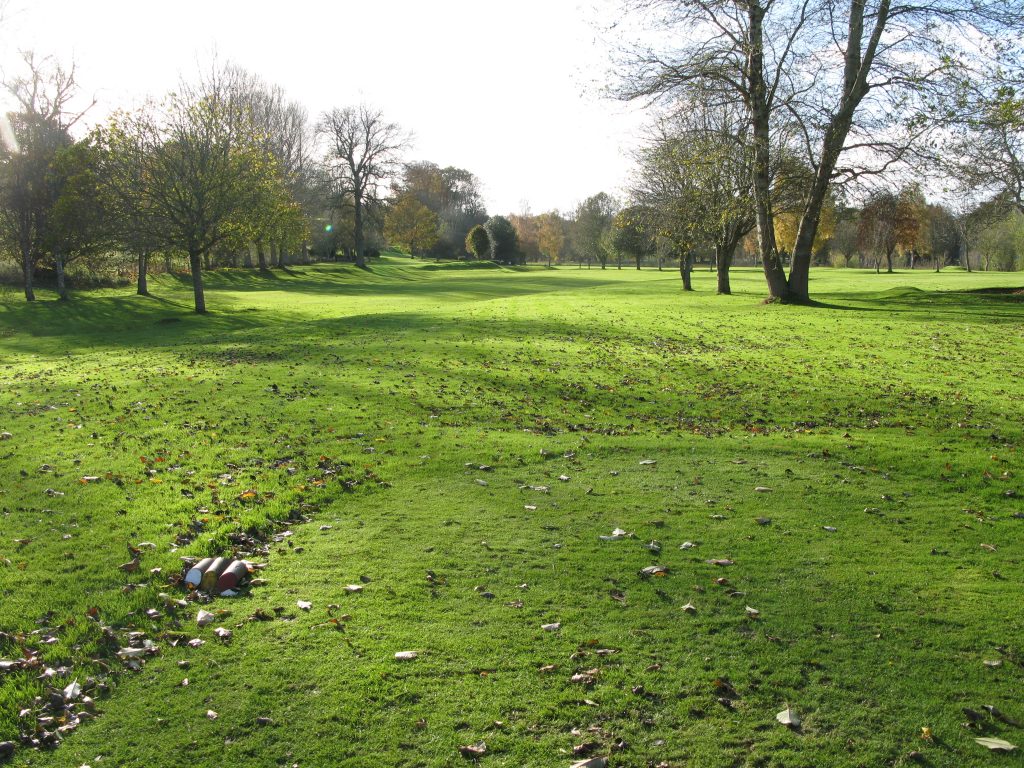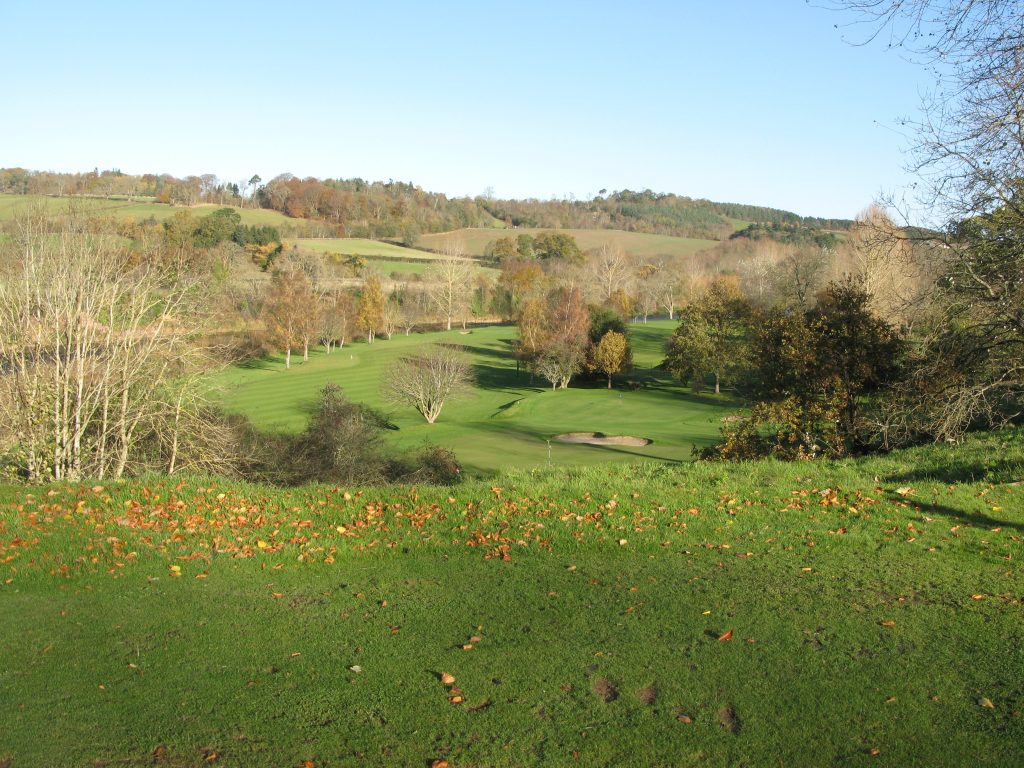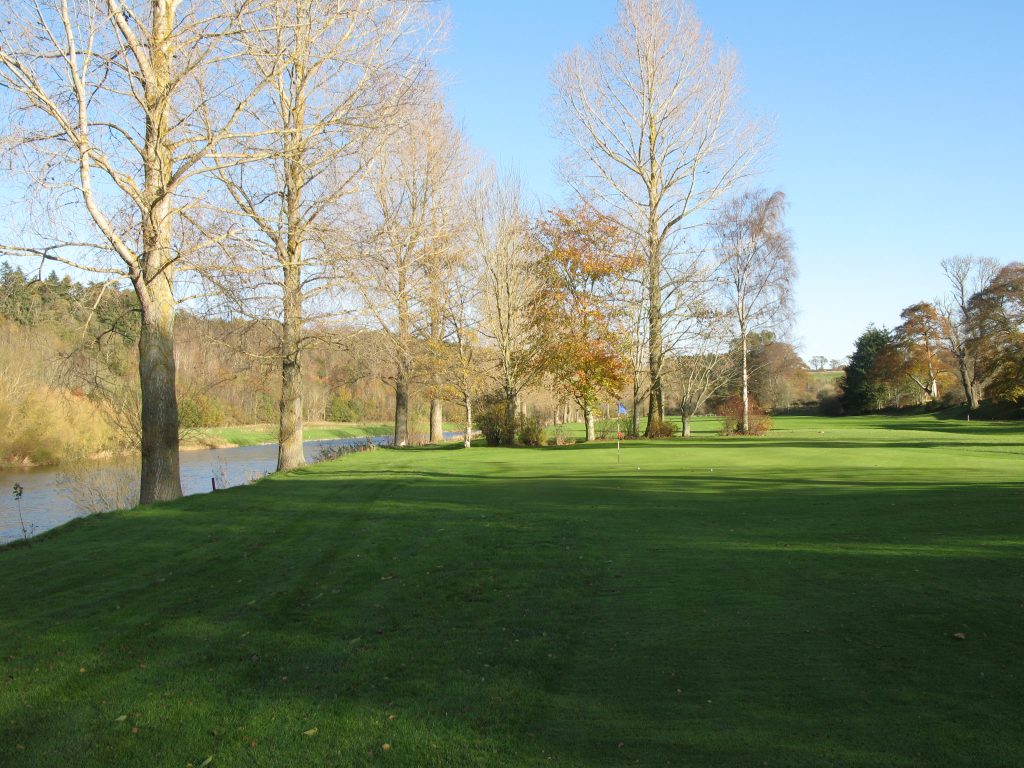Superbly designed course that could be considered any of links, parkland or woodland!
Round £90…plus hotel residency! Par 72. Value (out of 5) – 3.5
I felt a little stupid when the answer came to my question “Why is it called Archerfield?”. “It was where King Edward I’s bowmen practiced in 1298!”
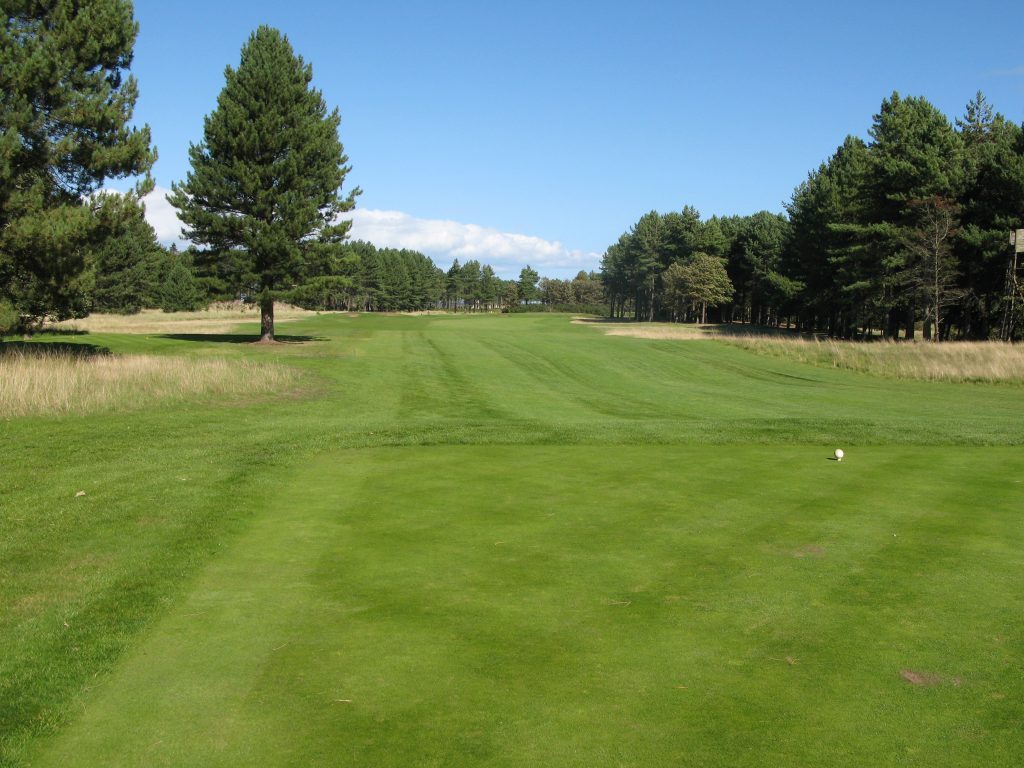
The 1st at Fidra Links, very typical of the first 11 holes.
Fidra Links is one of the two courses on the Archerfield Estate, a golf centred development created by the Edinburgh businessman Kevin Doyle over the last 15 years. The estate has a range of 5 star accommodation options, with the 17th Century, 16 bedroom, flagship Archerfield House being available to rent in part or in whole. When my wife and I stayed in a nearby “Pavilion Suite”, we were politely refused entry to Archerfield House by a Concierge, as we weren’t one of the 4 Americans that had rented it for the week. Get the picture – know your place amongst the clientele of “Scottish” golf these days.

A view towards the Bass Rock from behind the 6th green at Fidra Links
Seriously though, with great accommodation, a quite superb Scandinavian inspired spa, and first rate practice facilities on offer, this is a world class golf resort on Edinburgh’s doorstep. Curiously, the clubhouse restaurant and bar is adorned with African art, giving it a colonial feel?
Nestled between Muirfield and North Berwick, and adjacent to the magnificent Renaissance, Fidra Links and Dirleton Links (the other Archerfield course) strengthen the case that this East Lothian region is Scotland’s premier golfing destination.
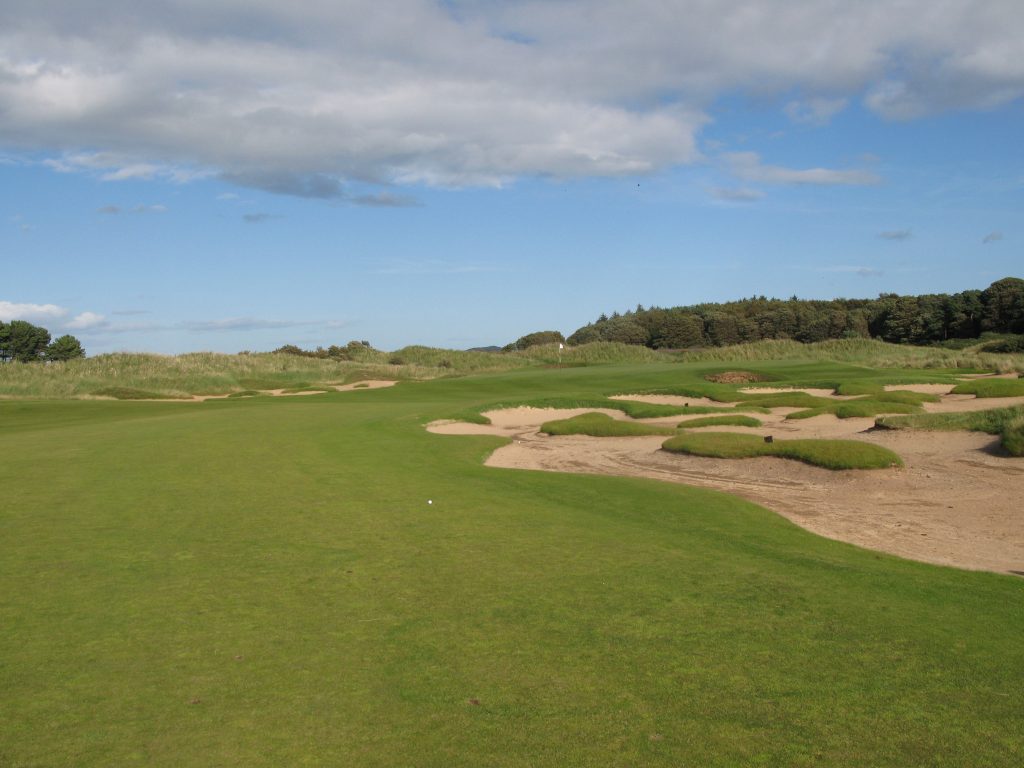
The approach to the 12th has plenty sand awaiting.
It’s not cheap though; membership via a debenture costs about £30,000, then around £3,000 annual fees. But, you do get your shoes cleaned and don’t need to worry about paying for range balls. You can have a “golf experience day” (price unknown), or as I did pay a £90 green fee as an accommodation occupant; I suspect many golfers play both courses either side of a single night B&B stay, which costs about £500; not bad for a short break of this quality. The clubhouse food is pretty good too, and not overpriced.
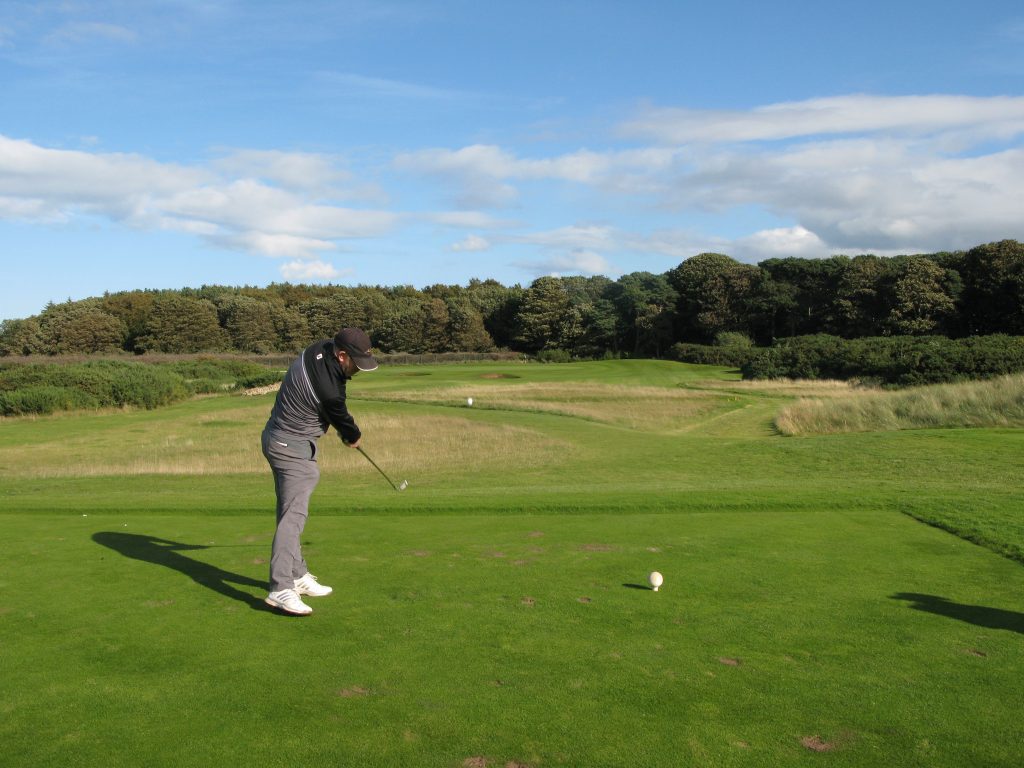
Moly plays straight at the par 3 12th at Fidra Links – straight into the front bunker that is!
Fidra “Links” is a beautifully laid out design by architect David J Russell, who has created a great mix of parkland, woodland and links! It may well be the most tree lined course adjacent to the sea in Scotland; I really don’t know how you would classify it. The first 11 holes are pine forest protected, with the last 7 holes being the “faux” links holes open to the elements. The bunkering is often fierce, the greens are large and tricky, and with constant changes of direction, it’s difficult to get an easy couple of holes together, especially if the wind is up as it was for us. The trees are fairly open at times with the pine undergrowth meaning balls are relatively easy to find, which is a big bonus with my wayward driving game.
The course condition was excellent, as one would expect, and if you were to find any lost balls they are unlikely to be scuffed Top-Fight’s. Finding good golf balls, especially by having to crawl though thorny bushes, is one of the guilty pleasures in my life! It was actually more difficult to find the next tee at Fidra, than lost balls, as apparently Mr Dolye doesn’t like signage? That was my main criticism of the course, as well as the tee options.
There are some great golf holes here. The SI 2, par 4, 7th hole, is a slight dog leg left, where only a tee shot on the right of the fairway, can avoid having to hit over 2 prominent trees about 50 yards short of the green. The short par 4 12th has magnificent bunkering awaiting a pushed second. The 14th, into the prevailing wind was well worth the SI1 tag.

The fairway bunker on 15 at Fidra is a typical and well constructed feature.
It wasn’t long from the yellow tee (5463 yards), but with 4 tee options to choose, I played off the white at 6201 yards, and felt I played really well for my 96 and 29 stableford points. Disappointingly, there were no red tees, the traditional colour used for ladies, which given the current debate about encouraging women to play, didn’t make any sense to me! The card was though very instructive (see below) as it was printed daily with the pin positions!
If you can afford it, its worth staying and playing at Archerfield. If you do, I recommend you also splash out on the Golfer’s recovery massage – I didn’t know I had so many knots in my back!
Facts:
Course Type: Parkland/woodland/links
Par 72 (4 par 5s, 10 par 4s, 4 par 3s)
Distance (white): 6201 Yards
Moly’s Gross score: 96
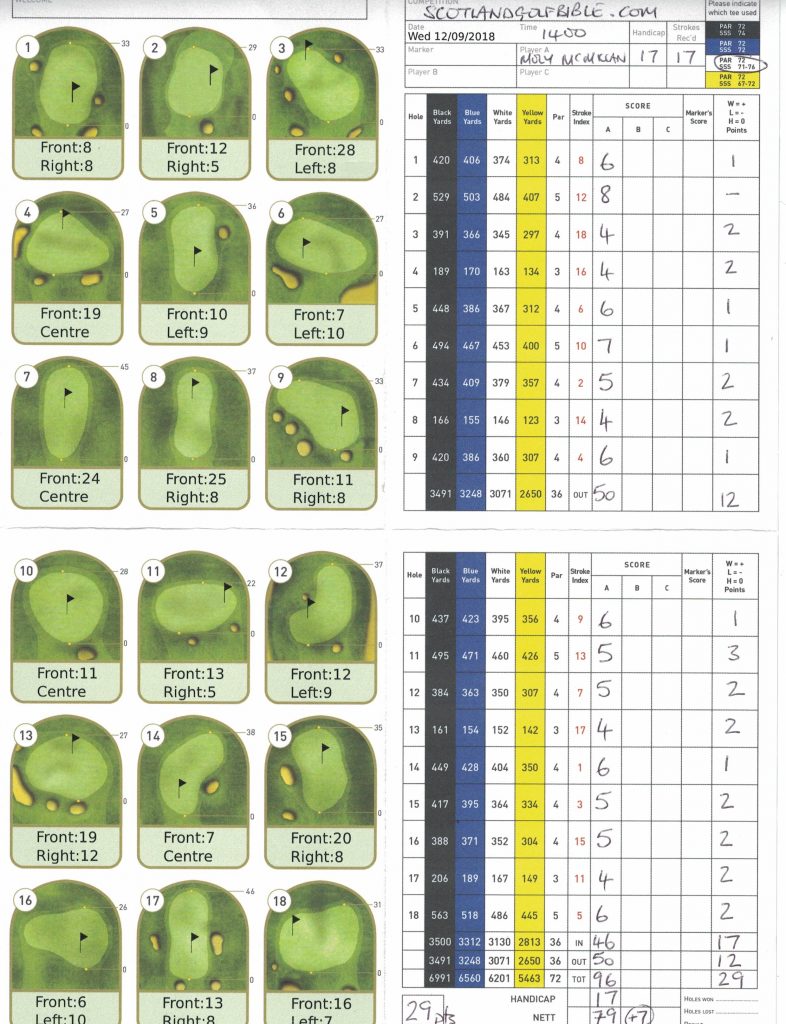
The daily printed scorecard at Archerfield’s Fidra Links – Moly shot 96.

